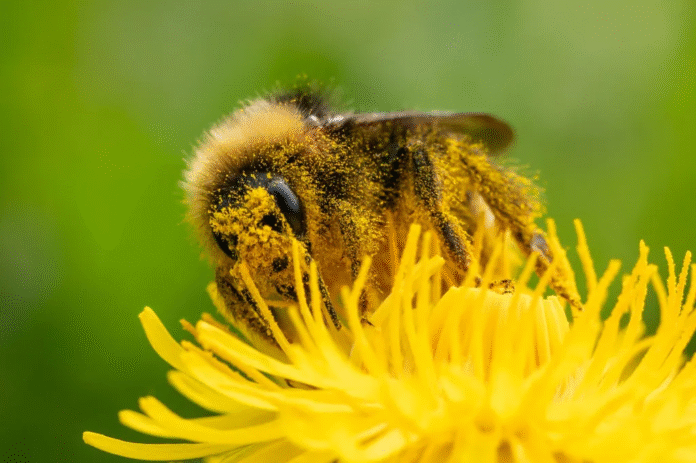
As the warmth of spring finally sweeps across the U.S., many Americans are celebrating the end of a harsh winter. However, for millions of seasonal allergy sufferers, the arrival of spring brings an entirely different reality. This year, a perfect storm of factors has led to what is being called the worst allergy season ever, with record-breaking pollen counts and longer, more intense allergy seasons sweeping across the country.
Cities like Atlanta have already shattered their previous pollen count records. Just recently, the city logged a staggering 14,801 grains of pollen per cubic meter in the air, an alarming number that underscores how severe the pollen problem has become. Houston, too, reported its highest pollen counts since record-keeping began in 2013. With climate change continuing to accelerate, experts are warning that this may only be the beginning.
A Growing Crisis: Why Allergies Are Getting Worse
Seasonal allergies, which affect about one in three adults and one in four children in the U.S., are already a common source of misery. Sneezing, headaches, watery eyes, and sinus congestion are a familiar reality for many as they try to enjoy the first warm days of the year. However, this year’s allergy season has been particularly brutal—and experts point to climate change as the root cause.
The underlying issue is simple: warmer temperatures, longer growing seasons, and increased levels of carbon dioxide in the atmosphere are driving plants to produce more pollen. “In the spring, tree pollen is the first to hit, and it’s now arriving 20 days earlier than it did 30 years ago,” explained Kenneth Mendez, CEO of the Asthma and Allergy Foundation of America (AAFA). This shift is a direct result of climate change, which is lengthening the period during which pollen is produced, increasing its concentration, and even causing it to linger well into the summer months.
Moreover, as carbon dioxide levels rise, plants are getting more “fertilized” and, as a result, are churning out even more pollen. The small, airborne particles, which are the primary triggers for seasonal allergies, are becoming a nearly year-round menace in some parts of the U.S.
A Growing Public Health Burden
While for many people, seasonal allergies are just an uncomfortable nuisance, for others, they can be far more serious. As pollen counts continue to rise, so does the number of individuals suffering from severe allergy-related health complications. In fact, one study found that tree pollen allergies lead to between 25,000 and 50,000 emergency room visits annually—two-thirds of which are from children under the age of 18.
For children and vulnerable adults, excessive pollen exposure can lead to dangerous complications, such as asthma attacks or worsening allergic rhinitis (commonly known as hay fever). These conditions, along with other allergy-related health issues, are contributing to a growing economic burden. According to experts, the costs of treating allergies—along with lost workdays and reduced productivity—run into the billions of dollars each year.
Mendez noted that many people are experiencing a worsening of their allergies, even if they have never had symptoms before. “We hear all the time, ‘I’ve never had allergies before, and now I suddenly feel like I have allergies,’ or ‘I feel like my allergies are getting a lot worse,’” he said. “That’s because the allergic load is that much higher because of climate change.” In other words, the pollen count is no longer just a seasonal issue—it’s an escalating environmental problem that’s affecting more people than ever before.
The Economic and Personal Toll of Allergies
The consequences of this worsening allergy season go beyond discomfort. For many, the daily struggle to manage symptoms can interfere with work, school, and quality of life. According to the Centers for Disease Control and Prevention (CDC), allergic rhinitis alone accounts for more than 16 million lost workdays each year. The financial impact on the healthcare system is also significant, with billions spent annually on allergy medications, doctor visits, and emergency room trips.
And it’s not just the direct costs that add up. The productivity losses, school absences, and overall strain on the healthcare system create a ripple effect that touches everyone. As climate change continues to fuel the severity of seasonal allergies, the toll on individuals and society as a whole will likely continue to rise.
Pollen Is a Relentless Foe
The way allergies are affecting people is also changing. With record-high pollen counts and longer allergy seasons, people are finding that their usual strategies for avoiding pollen aren’t enough. In many cases, even staying indoors doesn’t offer the protection it once did. Some of the tiniest pollen grains can seep into homes and buildings, rendering air conditioning and closed windows ineffective in keeping allergens at bay.
“If the trend lines continue, I think more people are going to feel miserable from allergies,” Mendez warned. And as those trend lines continue to escalate due to global warming, it’s clear that this crisis will only deepen. For millions of people, the struggle to breathe, think clearly, and go about their daily lives without the constant nagging of allergies will become even more difficult.
What Can Be Done?
As this allergy season unfolds with record-breaking pollen levels, it’s becoming evident that addressing the root cause—climate change—is critical. While individual measures like staying indoors or using air purifiers can help alleviate symptoms, they are temporary solutions. A broader, more systemic response is necessary to address the underlying causes of the problem.
Experts agree that the best way forward is to mitigate climate change by reducing greenhouse gas emissions, supporting clean energy initiatives, and implementing stronger environmental policies. While the battle against allergies may seem personal and localized, it is part of a much larger, global fight against a warming climate.
Until then, those suffering from this year’s severe allergy season will continue to face a miserable reality—one that, unfortunately, is likely to persist for years to come.
4o


